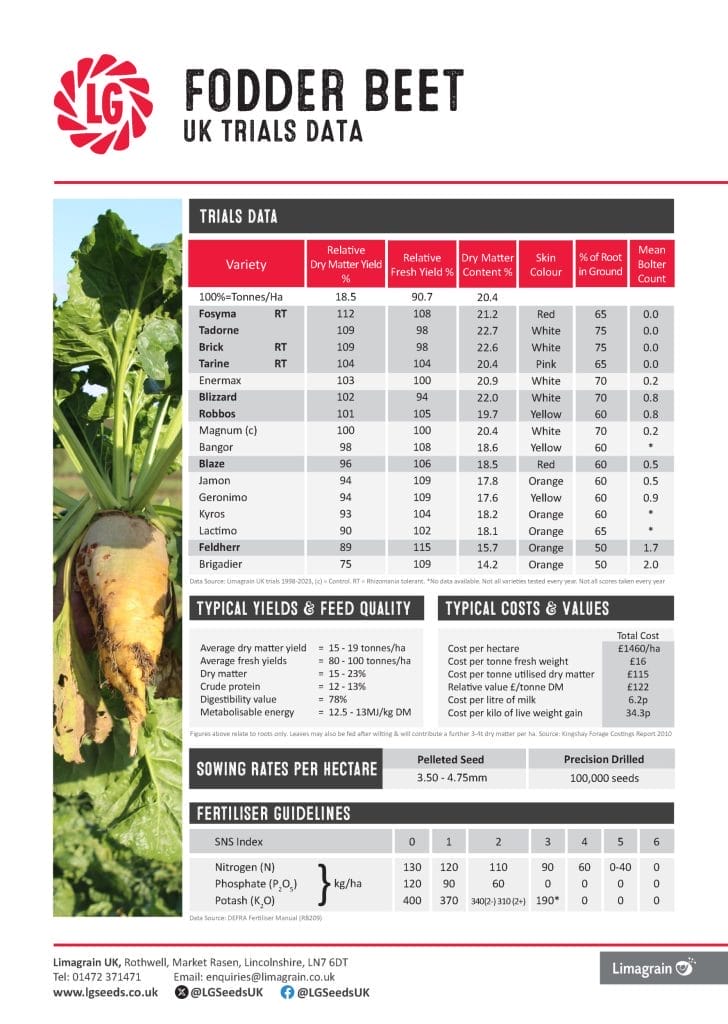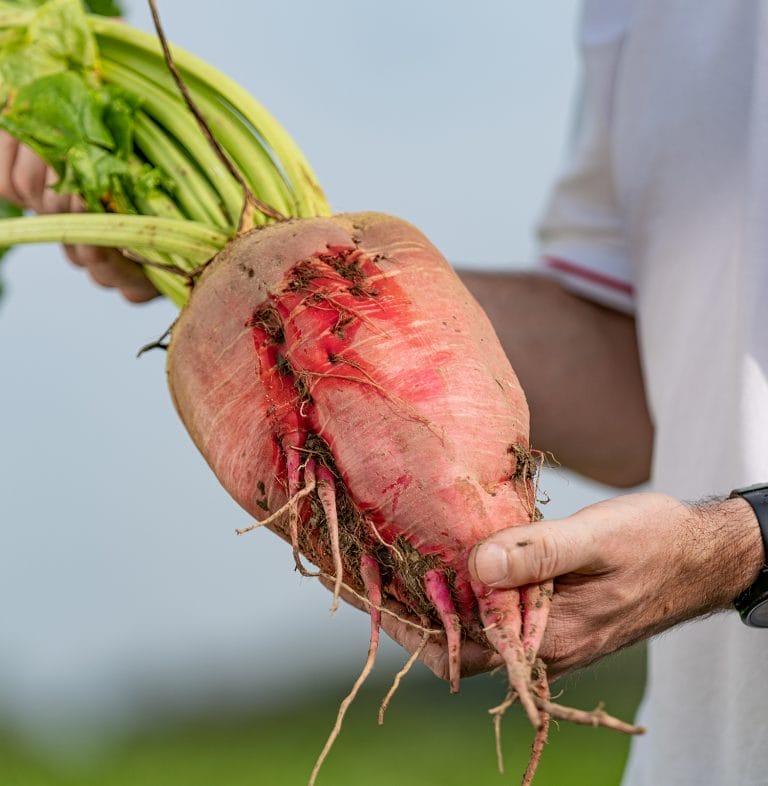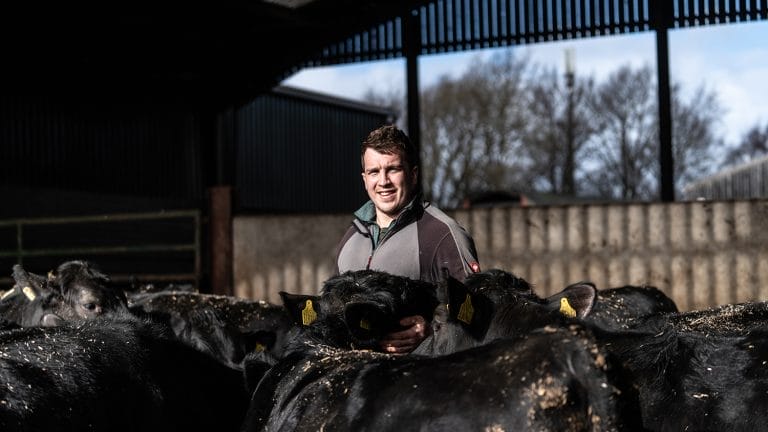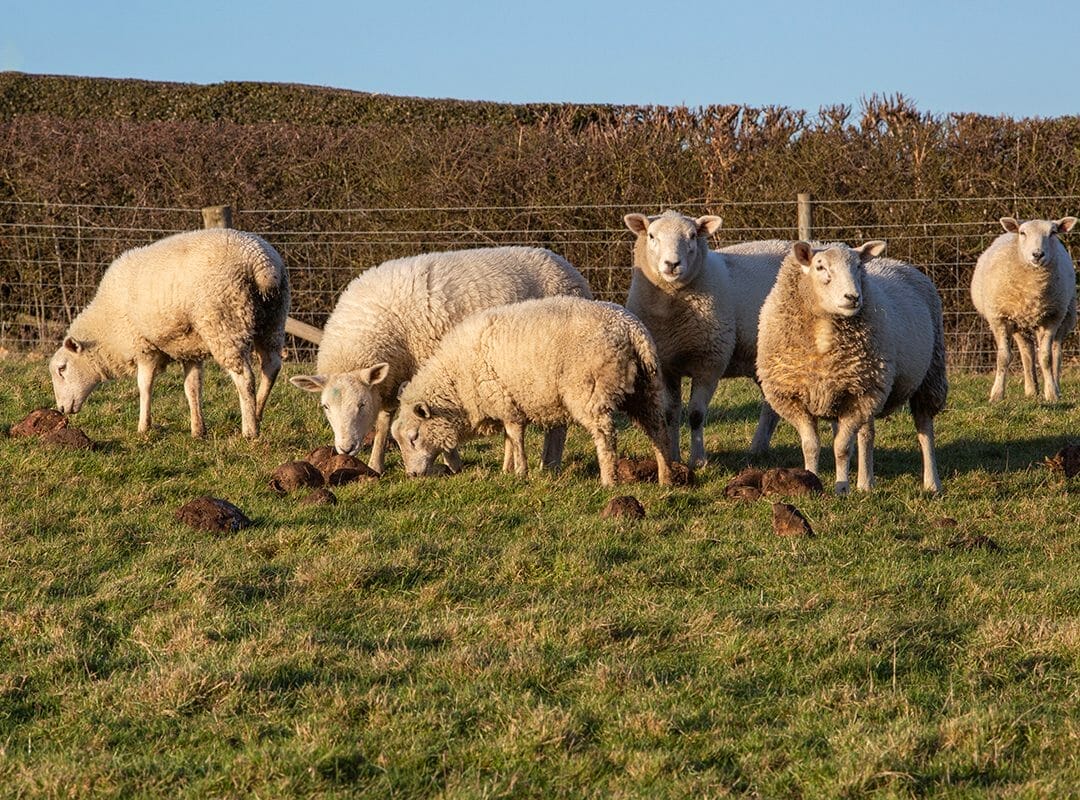
Brothers Richard and Fred White who run a 650-hectare mixed farm have grown fodder beet as part of their crop rotation for the past 23 years
Brothers Richard and Fred White run a 650-hectare mixed farm, comprising beef, sheep and arable enterprises, in Warwickshire, and they’ve grown fodder beet as part of their crop rotation for the past 23 years, waxing lyrical about its record yields and its part in ticking a lot of boxes in their farming system. 
They began growing Limagrain UK variety Fosyma in 2020 after a recommendation from Wynnstay’s Emma Edwards. This high-dry-matter fodder beet variety is pink-skinned and conical-shaped, and it combines a dry matter content of between 20% and 21% with a relatively high proportion of its root (40%) out of the ground, leaving just 60% in the ground.
Essential part of the rotation
“It fits well into our rotation, usually following and preceding winter wheat,” explains Richard. “We also grow forage maize to feed to the 180-head beef herd, as well as oats and barley, which is also rolled and fed to livestock.”
He and Fred thought Fosyma would do well on their Tamworth-based farm, particularly because they lift and feed fodder beet to their Hereford cattle and sheep during the winter.
It’s medium-depth root reduces the risk of soil contamination and offers flexible feeding and end-use options. Their contractor uses root-lifting equipment, typically harvesting the 23 hectares of the crop that they grow each year. Soil contamination has never been an issue for the Whites.
Market options
They store and feed approximately 50% of the fodder beet to their own sheep and cattle. The other half is sold off farm, for between £45 and £50 per tonne. Some has gone to AD plants, and some has also been sold to feed to deer om a nearby estate.
“They really enjoy fodder beet – as do our cattle and sheep. They all do really well on it.”
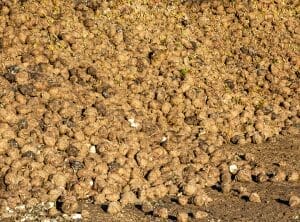 Producing home-grown feed and forage is a priority for the brothers, but fodder beet is also a useful break crop. “We typically sow is at the end of April, after applying plenty of manure,” explains Richard, adding that the farm comprises a mixture of different soils.
Producing home-grown feed and forage is a priority for the brothers, but fodder beet is also a useful break crop. “We typically sow is at the end of April, after applying plenty of manure,” explains Richard, adding that the farm comprises a mixture of different soils.
“We have heavy, medium and light soils and the crop is sown across them all – we mix it up. And is performs well – we always see good yields.”
Once in the ground, Richard says the fodder beet ‘doesn’t hang about’. “It germinates and grows quickly. We do need to control weeds, to prevent competition, but once well established the crop’s canopy helps to suppress them.”
The crop is typically ready for harvest at the end of September, but they leave it in the ground until lifting in mid-October. As soon as the beet is lifted, they’re ready with the drill and sow winter wheat into the ground. So they’re not leaving the land fallow over winter.
Palatable yields
For the past three years Fosyma has yielded between 30 tonnes and 35 tonnes per acre (75 tonnes and 87 tonnes per hectare). It’s stored outside in a clamp made from straw bales and feeding to outwintered livestock starts when grass growth slows, which is usually at the end of October.
“It’s fed whole, on the ground, to cattle and sheep. We don’t have to chop it. And they love it – there’s no waste.”
Richard adds that as well as adding ‘interest’ to winter rations, fodder beet also supports lamb growth.
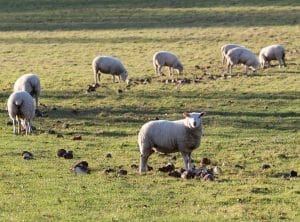 The 450-ewe flock lambs in late April, and lambs are finished on the farm’s 400 acres (160-hectares) of permanent pasture and fodder beet during the winter. “We start selling lambs in January, at around 45kg LW,” he says.
The 450-ewe flock lambs in late April, and lambs are finished on the farm’s 400 acres (160-hectares) of permanent pasture and fodder beet during the winter. “We start selling lambs in January, at around 45kg LW,” he says.
Home grown forage saves £
“We don’t buy in any feed or concentrates for the ewes or the lambs – the system is completely forage based.”
The beef enterprise is also predominantly grass based, with only home-grown cereals fed as part of winter ration when cattle are housed. Cattle are finished and sold, at between 24 and 30 months, to local butchers in Atherstone
In 2021, Richard grew a crop that looked very ‘bare’. “The seed went in well, as usual, but were no beet plants and there were no weeds either. It was odd and Limagrain UK’s Brian Copestake came to take a look because I was at a loss as to what had happened.
“He said it was a flea beetle problem and while I was deliberating about re-drilling, the field suddenly sprouted green rows of beet plants. It soon caught up and within weeks we had a field full of strong and healthy beet that as well up to calf level. It bounced back well and I don’t think I’ve ever seen any other crop do that.” 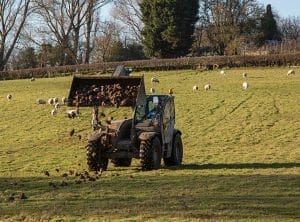
All-weather crop
Fodder beet also performs well in both wet and dry summers. “We noticed how much deeper rooted the crop was in 2022, due to the drier than typical conditions. It tolerated the more extreme summer and actually outperformed the 2021 crop.
We harvested 98 tonnes per hectare, which we were extremely pleased with,” says Richard, adding that poorer performing crops of different fodder beet varieties have yielded just half that at 50 tonnes per hectares.”
The Whites are planning to grow a similar hectarage of Fosyma in 2023.
“The variety (Fosyma) is the best we’ve ever grown, and we’ll certainly be drilling it again in 2023. Fodder beet has been an essential part of livestock rations and the crop rotation here for 23 years, so that’s not set to change,” adds Richard.
Learn more about Fosyma fodder beet here or contact your usual seed merchant for availability
The latest UK trial results data on fodder beet (including Fosyma) can be downloaded here






























